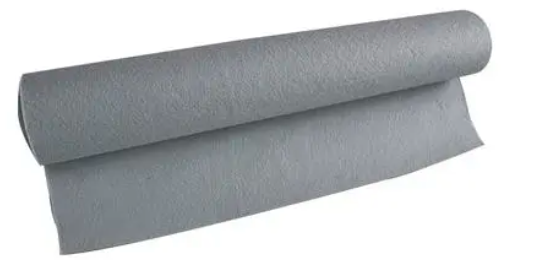- Understanding the Role of Geomembrane Liners in Waste Management
- Innovations in Geomembrane Liners for Water Management
- Geomembrane Liners: A Comprehensive Guide
- The Future of Geomembrane Liners in Civil Engineering
- Geomembrane Liners: Enhancing Landfill Stability
Manager:
WhatsApp:+86 177 0135 2670
Tel:+86 177 0135 2670
Email:marketing@okorder.com
Address:3rd Floor, No.2 Building, No.1 Sanlihe Road
Nonwoven Geotextiles: The Invisible Heroes of the Earth
In this broad field of civil engineering and environmental protection, nonwoven Geotextiles remain silent guards of our infrastructure’s integrity as well as the safety of our environment. The versatility that characterizes nonwoven geotextiles and their far-reaching effects on human capacity to alter and preserve nature astound me when I immerse myself in studying about these materials. This story is a tribute to these forgotten heroes, a fabric which reinforces not only soil but also underlines our collective will for sustainable tomorrow.
The Unobtrusive Watchdogs: An Overview of Nonwoven Geotextiles
Nonwoven geotextiles is an ingeniously spun tale made up of synthetic threads such as polyester and polypropylene. These are no mere textiles but rather are like the strands woven into the complex fabric that underpins contemporary infrastructure. As I research its uses and market dynamics, I am reminded that these fabrics have the potential to revolutionize construction and environmental stewardship.

A Market on the Way Up
The global market for non-woven geotextiles is increasingly expanding due to rising infrastructural developments and growing awareness about soil erosion coupled with its impact on the environment. This growth reflects increasing recognition of the significant role played by such materials across different sectors ranging from civil engineering to environmental protection.
Material Innovations: The Science behind Nonwoven Geotextiles
Mostly, nonwovens are made from material like polyester or polypropylene which possess distinct features for myriad purposes.
Polyester: A Competitor in High Strength
Its high strength makes polyester ideal for such things as landscaping which involves geotextile, particularly when there is need for erosion control or filtration purposes. Its resistance to ultraviolet radiation further enhances its suitability for outdoor installations.
Polypropylene: Cheap Versatility
Polypropylene will be demanded in various grades due to its thermal and UV resistance. Its cheaper cost compared to other materials will also play a crucial role in its positive demand throughout the forecast period.
Beyond Construction Applications: A Fabric of Many Faces
Nonwoven geotextiles are useful for several purposes which include road construction, erosion protection, drainage, and environmental conservation.
Road Construction: The Strength from Beneath
Nonwoven geotextiles form a strong foundation for the stability of roads, dams and embankments hence enhancing their safety features as well as increasing their lifespans. They also come with tensile strength along with reduced water permeability thereby ensuring that our infrastructure remains intact for an extended duration.
Erosion Control: Mother Nature’s Keeper
The contribution of nonwoven geotextiles toward erosion control cannot be overestimated. These textiles prevent soil erosion by promoting vegetation growth and maintaining river bed as well as shoreline structures. Thus, they are more than just fabrics; they are guardians of land.
A Global Outlook on Growth: Regional Market Dynamics
Growth in non-woven geotextile market is not uniform across regions since it is dependent on individual area’s infrastructure needs and environment.
Asia Pacific Region: The Leading Light
The market is led by Asia-Pacific region due to rapid infrastructural development occurring here. China and India among others are at the forefront investing heavily into building railways, highways etc., which need strength and stability usually assured by non-woven geotextiles.
Wet Worries Over The Middle East & Africa
The Middle East and Africa are potential-rich regions for the nonwoven geotextile market. These materials are readily available at low cost and their use in road construction is gaining popularity.
Typical Market Conditions In Europe
In Europe, the nonwoven geotextile market is positively affected by such technological advancements as Geosynthetic Reinforced Walls (GRS) combined with application of geotextiles into infrastructural development of hilly areas where it would be impossible to reach them.
Competitive Forces that Drive Innovation
Key players in the industry are driving innovation within a dynamic competitive landscape for nonwoven geotextiles.
Driving Forces Of Market Development
These industry leaders do not just sell products; they offer solutions. Their focus on technology, innovation and sustainability is shaping the future of the nonwoven geotextile market.
Nonwovens Innovations And Sustainable Production
There’s an increasing emphasis on producing environmentally friendly and sustainable geotextiles. Reflecting increased interest regarding more sustainable production methods, jute and coir are starting to be used as raw materials for making fabrics of this kind.
People’s Feelings: The Personal Touch
As I conclude this exploration of non woven geotextile, I am overwhelmed with awe about their innovations and potentials. They are not just materials but forms part of our infrastructure backbone while also protecting our environment. Growth in the non-woven geotechnical fabric sector does not mean financial figures alone, rather it implies better days ahead based on potential offered by these fabrics.
Conclusion: Nonwoven Geotextiles Knitting A Better Future Together
To sum up, there is no denying that the Non-woven fabric niche demonstrates how innovation can play a role in addressing environmental problems in civil engineering field which has seen exponential growth during recent times due to increased demand for green technologies. Nonwoven geotextiles are expected to be a key element of the growth of this market in the future as it continues to expand driven by global infrastructure development and environmental protection initiatives. The market’s growth is not just a financial projection but a promise of the potential that these textiles hold in creating a better tomorrow. This term “nonwoven geotextile” sums up its strategic importance, thus pointing out the necessity for their thorough comprehension when applied within different building environments. While we are busy expanding our infrastructure, let us remember that silent but important fabric – nonwoven geotextile – that plays an indispensable role within our projects.
- Previous:Navigating Geotextile Pricing: An Odyssey in ‘Harga Geotextile’
- Next:The Boundless Role of Nonwoven Geotextiles in Contemporary Infrastructure






